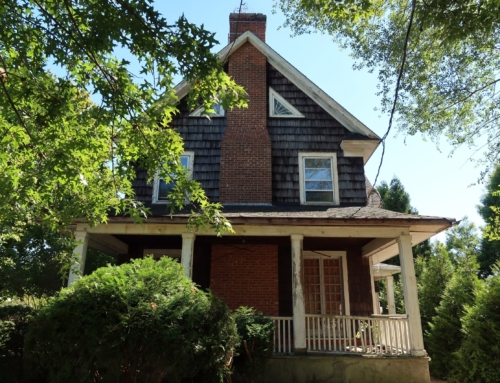Almost all home buyers (but particularly first-time home buyers) struggle over the purchase of a home. Typically, there’s stress when you’re searching for a home, and then more agonizing over the offer, negotiations, and finally, the closing.
Once the transaction is complete, the home buyer morphs into a homeowner. And that change sits differently on each homeowner’s shoulders.
Some homeowners immediately begin making changes. They’re finally in their own home, so why not let the fixing up begin? These homeowners unpack their boxes within a few days and actually have paintings hung up and matching towels in the new bathroom before their post office “change of address” form takes effect.
Want a room repainted? It’s done before most people would have found the time to go to a store to pick a color. Thinking about curtains? They magically appear before the paint has time to fully dry.
On the other hand, there are those home buyers who become rather complacent once they’ve closed on their home. Boxes remain, stacked neatly, in various rooms, while the occupants move about their daily lives. Weeks, months or perhaps years later, they’re finally unpacked, their contents digested.
Even the most complacent homeowner eventually gets around to fixing common household problems, replacing smoke detector batteries or burnt-out lightbulbs, or cutting the grass – usually because his or her spouse finally blows a gasket.
A few homeowners never get around to moving in. That’s because they tend to sell their home and move to another before they’ve found the time to unpack. Serial home buyers develop either because they’re constantly being transferred by their employer or because they never feel quite comfortable in the home they’ve bought. So they move on, hoping the next house will feel more like home.
Another new trend is the serial renovator. These homeowners view their home as a castle which can be altered according to mood. They’re aggressively active when it comes to upgrading or updating their home.
Serial renovators, for example, may buy several new couches within a few years, although the old furniture has not yet worn out. They’ll be constantly on the prowl for accessories and furnishings that will change the look and feel of their home.
New projects, large and small, creep up with astonishing frequency. Bathrooms are remodeled, kitchens updated, and homes are enlarged.
Some serial home buyers and renovators have been motivated, in recent years, by changes in the tax law which permits any homeowner to take the first $250,000 (up to $500,000 if you’re married) in profits tax free when you buy a home. Of course, you have to have lived in your home for 2 of the past 5 years, and not taken the exclusion within the past 24 months.
In neighborhoods where property values have soared anywhere from 30 to 150 percent in the past three years – and the stock market has pretty much stood still – selling your home to lock in some of those gains seems like a fairly savvy idea.
The hot property market has encouraged many homeowners to buy smart and renovate smarter. Buying a fixer-upper was a terrific way to build in value during the last decade. Many homeowners became so adept at it that they’ve sold and bought other fixer-uppers, staying 2 years and pocketing the gains tax-free in that time.
Whatever happened to buying a home and living in it for 30 years or more? It happens only rarely. A recent study indicated renters move every couple of years, and homeowners tend to move every ten to twelve years, depending on the age of their children.
Thirty years is a long time to spend in one place. Especially if you never get around to unpacking.
Published: Feb 25, 2002






Leave A Comment